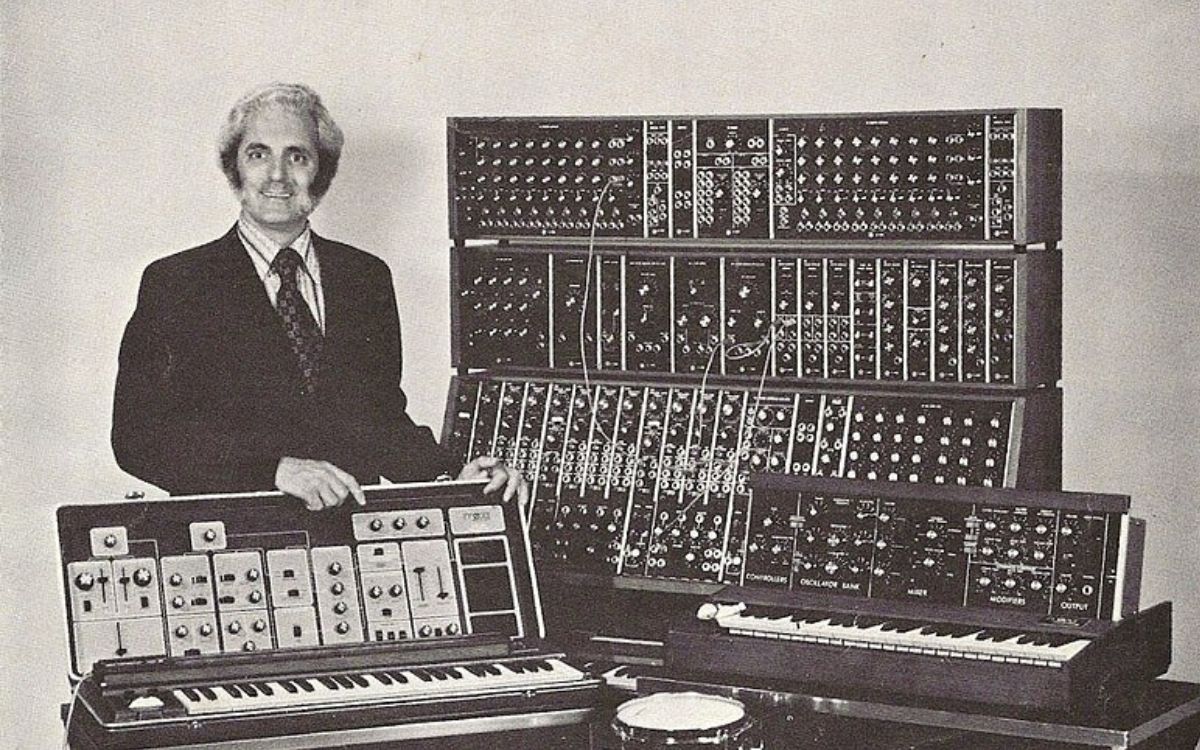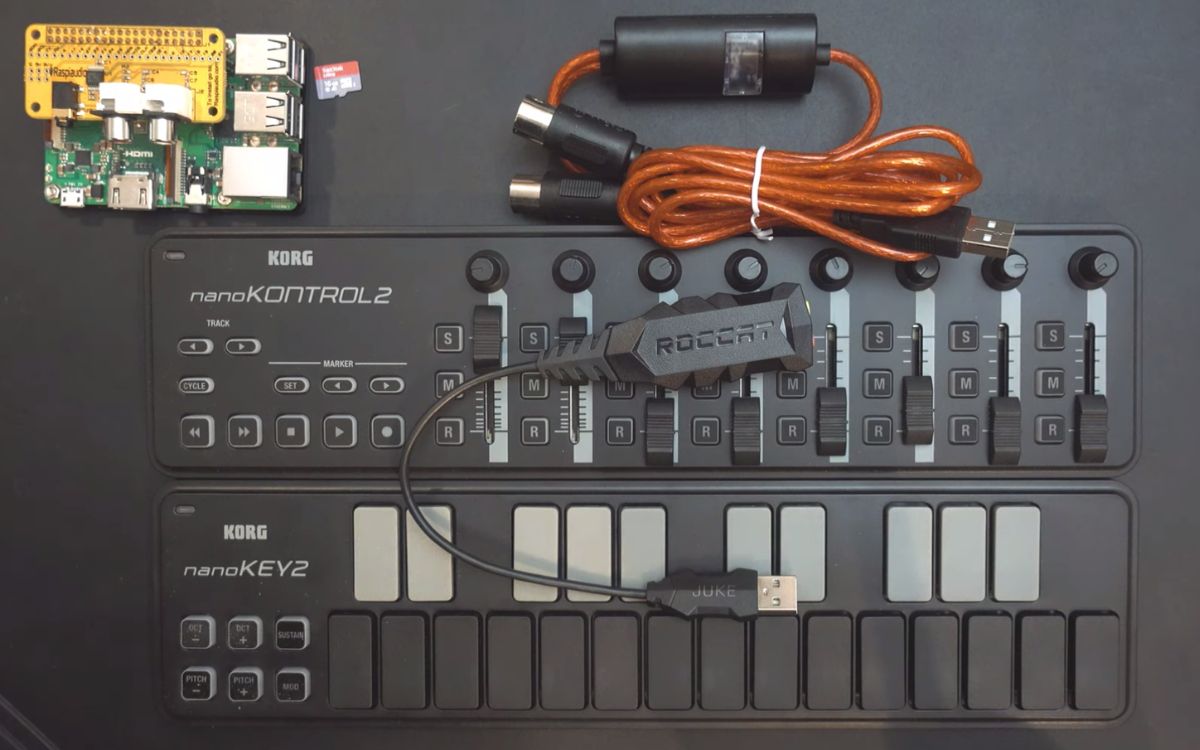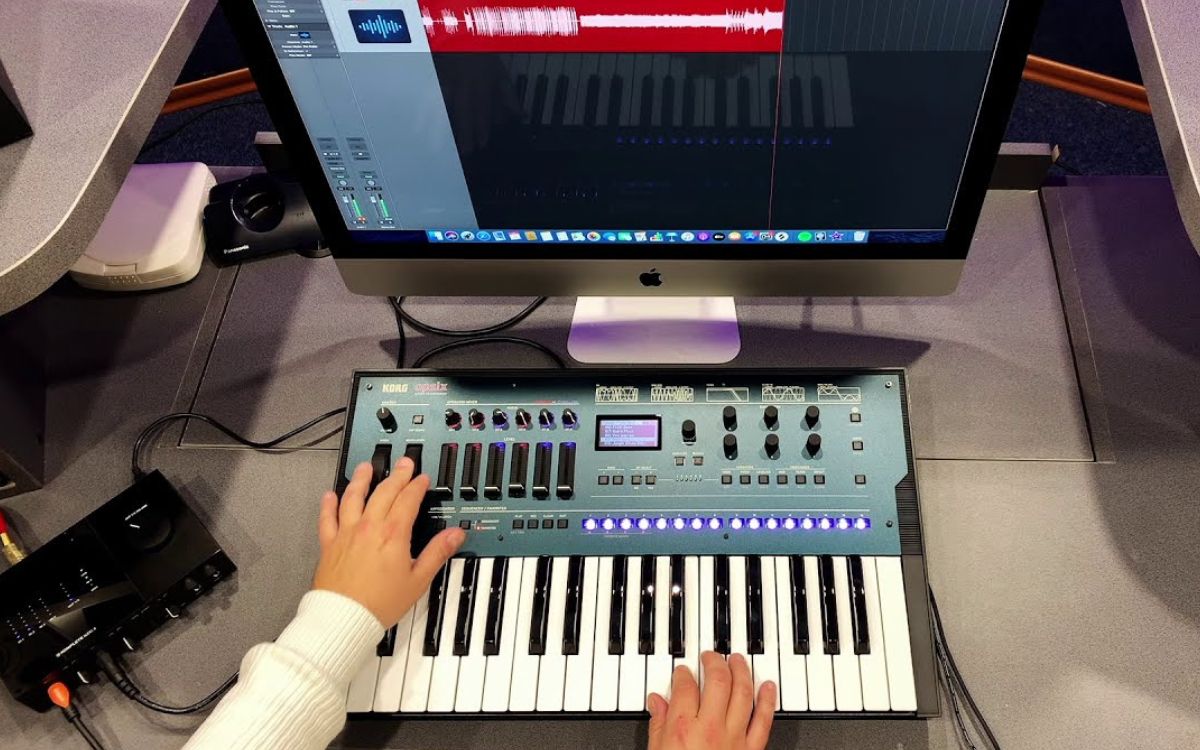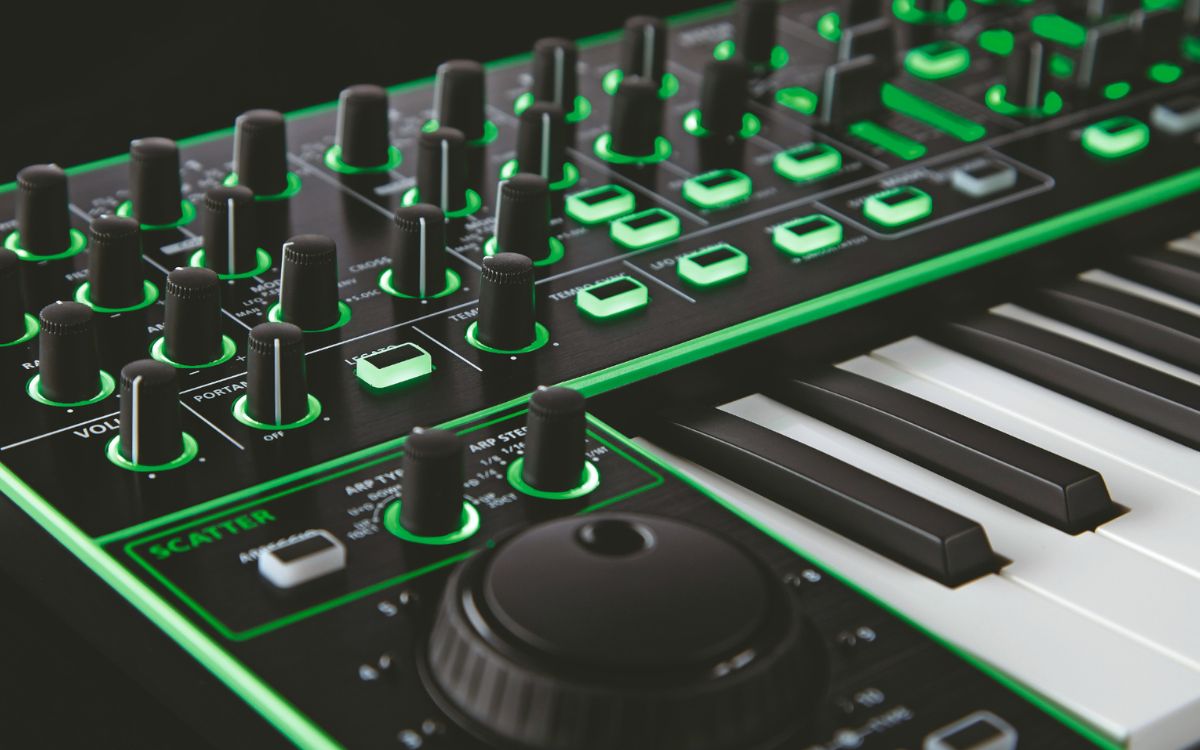Home>Instruments>Synthesizer>Who Were The First Musicians To Make Use Of The Moog Synthesizer?


Synthesizer
Who Were The First Musicians To Make Use Of The Moog Synthesizer?
Modified: January 22, 2024
Discover the pioneers who were the first musicians to utilize the groundbreaking Moog Synthesizer, revolutionizing the world of music with their innovative use of this groundbreaking synthesizer.
(Many of the links in this article redirect to a specific reviewed product. Your purchase of these products through affiliate links helps to generate commission for AudioLover.com, at no extra cost. Learn more)
Table of Contents
Introduction
The Moog synthesizer is an iconic instrument that has shaped the sound of music since its introduction in the 1960s. Developed by Dr. Robert Moog, it paved the way for electronic music and revolutionized the way musicians create and explore new sounds. From its early beginnings to its integration into mainstream music, the Moog synthesizer has left an indelible mark on the music industry.
This article will delve into the early developments of the Moog synthesizer and highlight some of the pioneering musicians who were instrumental in popularizing this innovative instrument. We will explore how Wendy Carlos, Isao Tomita, Keith Emerson, and The Beatles embraced and experimented with the Moog synthesizer, pushing creative boundaries and influencing generations of musicians.
Whether you are a synth enthusiast, a music lover, or simply curious about the history of electronic music, join us on this journey to uncover the first musicians who made use of the Moog synthesizer, and discover the sonic possibilities this groundbreaking instrument unleashed.
From atmospheric soundscapes to frenetic solos, the Moog synthesizer has the ability to evoke a wide range of emotions and captivate listeners with its unique timbres. Let’s dive into the world of early Moog synthesizer music and pay homage to the trailblazing artists who paved the way for its widespread adoption.
Early Developments of the Moog Synthesizer
The Moog synthesizer was the brainchild of Dr. Robert Moog, an American engineer and pioneer in electronic music. In the 1960s, Moog developed a modular synthesizer system that revolutionized the way musicians created and manipulated sounds. This early incarnation of the Moog synthesizer consisted of a series of modules that could be connected to create complex electronic music setups.
With its innovative design and functionality, the Moog synthesizer quickly gained popularity among experimental musicians, avant-garde artists, and sound enthusiasts. The ability to shape and manipulate sound waves in real-time opened up endless possibilities for creative expression. Musicians could create otherworldly sounds, emulate traditional instruments, and even invent entirely new sonic landscapes.
One of the key features of the Moog synthesizer was its use of voltage-controlled oscillators (VCOs), which allowed for precise control over pitch and timbre. These VCOs generated various waveforms, including sine, square, and sawtooth waves, which formed the foundation of the synthesizer’s unique sound palette.
Additionally, the Moog synthesizer featured voltage-controlled filters (VCFs) and voltage-controlled amplifiers (VCAs), enabling musicians to shape the timbre and volume of the generated sounds. The inclusion of envelope generators allowed for the creation of dynamic and evolving sounds, further expanding the expressive capabilities of the instrument.
Early Moog synthesizer systems were large and cumbersome, consisting of multiple modules connected via patch cables. Each module had its function, such as generating sound, filtering frequencies, or controlling amplitude. This modular design empowered musicians to customize their setups and tailor their sound to their artistic vision.
The Moog synthesizer gained significant recognition through its use by innovative electronic music composers such as Walter Carlos (later known as Wendy Carlos), who brought the instrument to the mainstream in the late 1960s with the groundbreaking album “Switched-On Bach.”
As technology progressed, Moog’s synthesizers became more compact and accessible to musicians, leading to their integration into popular music genres. The influence of the Moog synthesizer can still be heard today in various musical styles, from electronic and pop to rock and even hip-hop.
Wendy Carlos: A Pioneer in Moog Synthesizer Music
When discussing the early pioneers of Moog synthesizer music, one name stands out prominently: Wendy Carlos. Wendy Carlos, born as Walter Carlos in 1939, played a pivotal role in bringing the Moog synthesizer into the mainstream with her groundbreaking album, “Switched-On Bach,” released in 1968.
Carlos’s album was a bold and revolutionary approach to classical music. Using the Moog synthesizer, she faithfully recreated the works of Johann Sebastian Bach, providing a fresh and electronic interpretation of these timeless compositions. The album became a huge success, transcending traditional boundaries and introducing a new audience to both electronic music and the capabilities of the Moog synthesizer.
What made “Switched-On Bach” so remarkable was not only the technical prowess displayed by Carlos but also the meticulous attention to detail in replicating the nuances and phrasing of traditional instruments. Through her skillful programming of the Moog synthesizer, Carlos successfully emulated the sounds of the harpsichord, strings, and other orchestral instruments, creating a rich and vibrant sonic experience.
Following the success of “Switched-On Bach,” Wendy Carlos continued to explore the possibilities of the Moog synthesizer in her later works. She ventured into film scores, most notably composing the iconic soundtrack for Stanley Kubrick’s “A Clockwork Orange” in 1971, which further solidified her status as an influential figure in the world of electronic music.
Carlos’s contribution to Moog synthesizer music extended beyond her own compositions. She collaborated with the pioneering synthesizer designer Robert Moog in refining and improving the instrument’s capabilities. Their partnership led to the creation of the Moog Multimoog, a keyboard synthesizer that offered enhanced performance features and easier integration into live performances.
Wendy Carlos’s bold exploration of classical music on the Moog synthesizer not only inspired countless musicians but also demonstrated the potential of electronic instruments to recreate and reinterpret traditional compositions. She pushed boundaries, challenged conventions, and showcased the expressive power of the Moog synthesizer, leaving an indelible mark on the world of music.
Isao Tomita: Bridging the Gap between Classical and Electronic Music
Isao Tomita, a Japanese composer and pioneer of electronic music, is renowned for his innovative use of the Moog synthesizer and his ability to bridge the gap between classical and electronic genres. Born in 1932, Tomita began his career as a composer and orchestrator, but it was his exploration of the Moog synthesizer that set him apart.
Tomita’s music blended classical orchestral works with electronic elements, creating a unique and captivating sound. His groundbreaking album, “Snowflakes Are Dancing,” released in 1974, showcased his artistic vision and technical prowess with the Moog synthesizer. The album featured electronic renditions of Claude Debussy’s compositions, bringing them into the contemporary era with an ethereal and otherworldly quality.
What set Tomita apart was his meticulous attention to detail, recreating the timbres and textures of orchestral instruments using the Moog synthesizer. He used the instrument’s capabilities to replicate the nuances of individual instruments, enabling his electronic arrangements to retain the expressiveness and emotional depth of the original pieces.
Tomita’s exploration of the Moog synthesizer went beyond his own compositions. He adapted famous orchestral works, such as Mussorgsky’s “Pictures at an Exhibition” and Holst’s “The Planets,” into electronic compositions. These adaptations showcased his ability to fuse the grandeur of classical music with the versatility and sonic possibilities of the Moog synthesizer.
Throughout his career, Isao Tomita pushed the boundaries of what was possible with the Moog synthesizer, embracing its unique capabilities and expanding the sonic palette of electronic music. His innovative approach to composition and orchestration gained him international recognition and influenced a generation of musicians.
Tomita’s legacy extends beyond his solo work. He collaborated with various artists and continued to release albums that pushed the boundaries of electronic music. His use of the Moog synthesizer inspired a wide range of artists across genres and helped popularize the instrument worldwide.
Isao Tomita’s contributions to the integration of classical and electronic music were groundbreaking. He demonstrated the versatility and expressive power of the Moog synthesizer, showcasing its ability to seamlessly blend traditional orchestral sounds with cutting-edge electronic elements. His musical legacy continues to inspire and influence musicians to this day.
Keith Emerson: Pushing the Limits with Progressive Rock
When it comes to pushing the boundaries of the Moog synthesizer and incorporating it into progressive rock music, one name stands out: Keith Emerson. Born in 1944, Emerson was a keyboardist, composer, and one-third of the iconic progressive rock band Emerson, Lake & Palmer (ELP).
Emerson’s virtuosic and commanding playing style, combined with his innovative use of the Moog synthesizer, revolutionized the sound of rock music in the 1970s. He was one of the first rock musicians to embrace the Moog synthesizer and integrate its unique capabilities into his performances and compositions.
Emerson utilized the Moog synthesizer not only as a traditional keyboard instrument but also as an expressive tool for creating distinctive sounds and textures. He pushed the limits of what the instrument could do, incorporating its powerful analog sound into ELP’s epic compositions.
One of Emerson’s notable Moog synthesizer performances was his adaptation of Modest Mussorgsky’s “Pictures at an Exhibition” on the album of the same name, released in 1971. His intricate and dynamic Moog solos brought a fresh and electrifying energy to the classical piece, showcasing the versatility of the instrument.
Emerson’s use of the Moog synthesizer went beyond solo performances. He integrated the instrument seamlessly into ELP’s compositions, creating complex and dynamic arrangements that blended traditional rock instruments with innovative synthesizer sounds. Tracks like “Lucky Man,” “Tarkus,” and “Karn Evil 9” feature memorable Moog synthesizer solos and atmospheric passages that became signature elements of ELP’s sound.
Emerson’s influence extended beyond his own music. His virtuosity and technical mastery of the Moog synthesizer inspired countless musicians and helped popularize the instrument in the world of progressive rock. His exploration of the Moog synthesizer’s sonic capabilities continues to resonate with musicians and fans alike.
Tragically, Keith Emerson passed away in 2016, leaving behind a remarkable legacy and an enduring impact on the music world. His groundbreaking use of the Moog synthesizer and his fearless approach to pushing the boundaries of rock music continue to inspire generations of musicians, ensuring that his pioneering spirit lives on.
The Beatles: Experimenting with the Moog Sound
No discussion of influential musicians and their use of the Moog synthesizer would be complete without mentioning The Beatles. The legendary British band, known for their experimental and innovative approach to music, incorporated the Moog synthesizer into their later albums, exploring its unique sonic possibilities.
Although the Moog synthesizer came on the scene in the late 1960s, The Beatles didn’t start utilizing the instrument until their album “Abbey Road” in 1969. It was on this album that George Harrison discovered the Moog synthesizer and its potential to add a new dimension to the band’s sound.
One of the most notable tracks featuring the Moog synthesizer is “Here Comes the Sun.” George Harrison used the instrument to create ethereal and swirling sounds that enhanced the dreamlike quality of the song. The Moog synthesizer added a touch of otherworldliness to the track, perfectly complementing the lyrical and melodic themes.
In addition to “Here Comes the Sun,” The Beatles incorporated the Moog synthesizer into other songs on their later albums, including “Because” and “Maxwell’s Silver Hammer.” The Moog’s distinct sound provided a fresh and experimental element to these compositions, further cementing The Beatles’ reputation as pioneers in musical exploration.
Perhaps one of the most iconic uses of the Moog synthesizer by The Beatles is found in their song “I Am the Walrus.” In the song’s psychedelic and surrealistic outro, a series of synthesized sounds, including the famous “goo goo ga joob” chant, were created using the Moog. This added an unpredictable and trippy element to the already mind-bending track and exemplified The Beatles’ willingness to push the boundaries of traditional music.
While The Beatles didn’t extensively explore the Moog synthesizer in their music, their experimentation and incorporation of its unique sound are a testament to their pioneering spirit. Their foray into the world of synthesizers helped pave the way for future artists to embrace and explore electronic instruments in their own music.
Though The Beatles’ time with the Moog synthesizer may have been relatively brief, their impact and influence on the instrument’s integration into popular music cannot be overstated. The band’s willingness to embrace new technologies and sounds played a significant role in shaping the landscape of modern music, making them an important part of the Moog’s storied history.
Conclusion
The Moog synthesizer has played a pivotal role in the evolution of music, pushing boundaries and inspiring countless musicians. From its early developments by Dr. Robert Moog to its integration into mainstream music, the Moog synthesizer has left an indelible mark on the music industry.
Through the exploration and mastery of the Moog synthesizer, pioneering musicians have expanded the sonic possibilities of music in various genres. Wendy Carlos paved the way with her groundbreaking album “Switched-On Bach,” showcasing the instrument’s potential in recreating classical compositions. Isao Tomita bridged the gap between classical and electronic music, demonstrating the expressive power of the Moog synthesizer. Keith Emerson pushed the limits with progressive rock, integrating the instrument’s unique sound into complex arrangements. The Beatles experimented with the Moog sound, adding a new dimension to their already innovative music.
The Moog synthesizer continues to impact music to this day, from its humble beginnings as a large modular system to its more compact and accessible forms. Its distinct analog sound has become an iconic element in various genres, and its influence can be heard in countless recordings.
As technology continues to advance, the Moog synthesizer remains a symbol of innovation, pushing the boundaries of what is possible in the creation of music. From its early adopters to its contemporary users, the Moog synthesizer has helped shape the sonic landscape, allowing musicians to express their creativity in new and exciting ways.
Whether you are a fan of electronic music, a lover of progressive rock, or simply appreciate the artistry of classical compositions, the Moog synthesizer has undoubtedly played a significant role in shaping the soundscape of modern music. Its impact will continue to resonate for generations to come, as musicians continue to explore and push the boundaries of sonic experimentation.
So, let us celebrate the Moog synthesizer and the trailblazing musicians who were the first to harness its potential. Their dedication and innovation have enriched the world of music, leaving a lasting legacy that will inspire future generations of musicians and continue to shape the future of sound.











